#Modern Babylon parallels
Explore tagged Tumblr posts
Text
Eschatology in Doctrine and Covenants Section 1: A Call to Faith in the Last Days
Doctrine and Covenants Section 1 opens with a clear mandate: the voice of warning is meant for all people. In a world often marked by uncertainty, this section provides guidance, reassurance, and a call to prepare for the last days. It reminds us that God’s instructions are not just historical directives but are deeply relevant to our lives now. Eschatology, or the study of last things, is at the…
#Avoid moral decline in society#Biblical eschatology and modern-day prophecy fulfillment#Build Zion in modern times#Building Zion in a global Babylonian society#Calamities in the Last Days#Christ&039;s warnings to His disciples and their relevance today#Destruction of Jerusalem parallels#Doctrine and Covenants Section 1#Embrace the gathering of Israel#End times Biblical perspective#End times prophecy#Eschatology and Doctrine and Covenants#Establishing Zion amid Babylon#Faith in Christ during the Last Days#Find hope in end times warnings#First-century Christian persecution#First-century social unrest and today&039;s world#Flee spiritual Babylon today#Gathering of Israel in the Last Days#Global Babylonian empire prophecy#How Doctrine and Covenants warns about the Last Days#Last Days warnings#Learn from Doctrine and Covenants 1#Lessons from ancient Babylon for modern society#Modern Babylon parallels#Moral decline in modern society#Moral discipline and spiritual growth in chaotic times#Overcome spiritual captivity#Partial Preterist eschatology#Political and social parallels between ancient and modern Babylon
0 notes
Text
One of my issues with modern Trek is that these days, the utopianism of the Federation is an informed attribute — the things the Federation does are good, even when they're not, because it's the Federation doing them. This leads to things like Section 31, a plot device originally introduced to challenge the Federation's utopianism and show how easy it is for even the most well-intentioned social projects to fall to darkness, getting its own movie.
I've seen a lot of people say that what we need to fix Star Trek is a return to TNG-era bright and shiny utopian sensibilities, and I see the merit of that position, but I don't agree with it.
Federation ideals have roots in American exceptionalism (yes, I acknowledge that Trek has a global fanbase but also, it's an American TV franchise with a heavily American sensibility), and the last thing we need is to compound that with "Federation fuck yeah, also black ops intelligence agencies are Cool and Good". I think that we live in an era where we're reaping the consequences of the unacknowledged American capacity for evil. The Federation, too, has a capacity for evil which has only barely ever been acknowledged, because — and this is where I show my entire ass as someone who's mostly a Babylon 5 fan these days — people are always going to be people, and "after a few centuries we just evolved past all human conflict" was never a good premise, as idyllic as it may seem.
So we've been getting what looks from the outside like a subtextual descent into fascism that parallels the one the US is going through right now. Why not make it textual? Why not break the cultural, technological, and political stasis of the Federation by showing how in decline the Federation actually is, how conservative and imperialistic it's become, and— most importantly — that people are fighting it, even where no one would expect them to?
I think, when you come down to it, that's how you fix Star Trek. By allowing the Federation to have a dark and ugly side, showing that dark ugliness for what it is, and then giving the people the opportunity to drag it kicking and screaming back into the light.
269 notes
·
View notes
Text
I haven’t talk about this until now because I’m actively ignoring these “interpretations” about “Nosferatu” (2024), but when these are the most popular here (and everywhere, apparently), and the most “liked” and “reblogged” post is how “people not comprehending this film correctly” followed by the most incorrect statement of all time, Von Franz is also compelling me to speak in the name of angels and demons with his Abraxas stone ring (if you don’t know what a “Abraxas stone ring” is, you shouldn’t even be attempting to interpret and analyze this film to begin with).
First: it’s mindblowing to me how folks are trying to interpret this story while systematically ignoring (either by choice or ignorance, I don’t even know at this point) all the inspirations and themes in it; yes, this story is based on “Dracula” by Bram Stoker, and “Nosferatu: A Symphony of Horror” (1922), but Robert Eggers also shared he was inspired by “Wuthering Heights” by Emily Brontë, and cinematic inspirations: “Svengali” (1931), “La Belle et la Bête” (Beauty and the Beast) (1946), “Great Expectations” (1946), “The Queen of Spades” (1949), “The Innocents” (1961), “Andriesh” (1954), “Vechir na Ivana Kupala” (“The Eve of Ivan Kupalo”) (1968) and “Leptirica” (“The She-Butterfly”) (1973).
Second, more than “Gothic horror” (Female Gothic genre, to be more specific), this film is Folk Horror because that’s Robert Eggers brand. This is a story is based on Romanian folklore: strigoi, Şolomonari and Zalmoxis worship. Orlok is a strigoi doing strigoi stuff, he’s also a Pagan who worshipped Zalmoxis to conquer the secret of immortality, and like all Pagans, he was demonized as a “devil worshipper” by Christianity.
Third, attempting to interpret what’s happening on-screen without any knowledge of the Victorian era, it’s incorrect. Robert Eggers has no interest in doing “modern takes” in his work; he transports his audience to the time period where his films take place. This means, the dialogue, behavior and beliefs of his characters will reflect the historical time in question. If you are interpreting all of this with modern day bias, you are incorrect in your interpretations, simple as that. If you don’t understand the meaning of the words, browse a Old English dictionary (I have no problem admitting I did this, actually).
Last but not least: attempting to interpret this film without knowing the alchemist and occult meaning behind this story is also incorrect. Are you familiar with Aleister Crowley occult system Thelema? Because it was already a part of the OG 1922 “Nosferatu”, Eggers just took a different route to arrive at the same message (the birth of New Age of Aquarius), because he wanted the divine feminine goddess. Do you know who Paracelsus is? He’s the reason why Ellen is called a “sylph”. Who Babalon and her Beast are? That’s Ellen and Orlok in this story. Eggers went full “all hail Babalon” in this film, because Ellen is the hero of the story, but not in the way everyone thinks. Christians know Babalon by another name: “the whore of Babylon” from the “Book of Revelations”.
After you understand all of these themes and inspirations, it’s when you start “problematizing” this story, and taking your own conclusions of it, or making parallels with other stories, not before.
64 notes
·
View notes
Text
every time i rewatch queer as folk, i fall in love a little more with the series. i fall in love a little more with the characters. i fall in love a little more with the stories and the relationships and even the endings that each of these couples got.
i know some people don’t like brian and justin’s ending, but it was perfect for them as characters. their love was never meant to be a locked door, keeping them in place. instead, they were characters that helped each other grow, that pushed each other to always be the best versions of themselves - whether it was risking literally everything to take down the corrupt politician in season three or accepting the heartache and the pain of not being together so justin could follow his dreams in new york.
if the two of them had gotten married in the finale and had the traditional happily ever after, it would’ve been a disservice to both of their characters. neither of them wanted a life where the other sacrificed everything to be with them and called it love, because that wasn’t the type of love they had. they had a love with no locks on the doors or bars on the window and because of that, the ending they got with each other was perfect.
it was the perfect culmination of five years of story and development. (but i do believe they ended up finding their way back together and live together in a happy open marriage where they never hook up with the same person twice and never kiss anyone else on the lips but each other.)
the fact that blake and ted ended up back together makes me so happy every fucking time. their on again and off again story was a great through line in the series -- revisited every now and then because they were always the right person, wrong time relationship. seeing them dancing at babylon in the end? they’re finally the right person at the right time. they finally grew into two people who were healthy for one another and ted got his birthday wish: to love himself as a whole and to then find someone else who loved him as a whole, not as a half waiting to be completed.
and of course ben and michael ended perfectly as did mel and lindsey. no notes. i do think emmett and drew one day found their way back together. they had a similar storyline to ted and blake -- right person, wrong time. drew was one of the few people who was able to match emmett and emmett brought out the best in drew.
and of course, michael and brian are still, to me, the heart of the show. their friendship and the love they have for each other and the way it changes over the show and the way they change -- only to end dancing together at a rebuilt babylon? perfection.
so much in the world has changed since 2005 when queer as folk ended, but so much has stayed the same. there’s still so many parallels to be drawn from the show to the modern world and that part breaks my heart. we’ve come so far, but we’ve still only taken baby steps.
but in the words of michael novotny: and so the thumpa thumpa continues. it always will. no matter what happens. no matter who’s president. as our lady of disco, the divine miss gloria gaynor, has always sung to us -- we will survive.
#queer as folk#qaf us#queer as folk us#brian kinney#justin taylor#britin#michael novotny#ben bruckner#emmett honeycutt#ted schmidt#the show got me in my fucking feels again#sorry for the very long rant#but i ended up deep in my feels#qaf meta#i guess?#idk just ramblings#because damn that is a lot of ramblings
134 notes
·
View notes
Text
Good, bad, questions, and predictions for this week. Harebrained Halo Headcanons of the week.
Good: Casting is still this show’s greatest selling point, particularly Joseph Morgan’s Ackerson. Every performance is stellar, and that goes a long way toward covering the series’ flaws.
I like the look at the rank-and-file military and the confirmation that there are in fact other Spartan teams out there. And, because this is me we’re talking about, I like the religious references. Babylon 5 trained me well, I guess. The St. Christopher Medal, Corporal I’m-a-Baptist, Talia’s family praying before dinner, Shaman Lady telling John to “find your faith, Spartan” because she has seen his death which comes soon. WHAT is up with that by the way. They can’t just leave a line like that there.
The costuming has leveled up this year. The Spartans’ duty uniforms last year, as I’ve said, looked like spray foam insulation and slinkies. These ones may look like the Spartans are managing a Cabela’s, but I still like it better. Also, Kai would rock the gun counter. Not one for modern AUs, but all of the Spartans working at a Cabela’s has some appeal.
The new intro and use of the actual Halo music.
Bad: Honestly, nothing about these two episodes is straight-up bad. It just doesn’t feel like a follow-up to S1. Some of this is a new showrunner, so of course things will look different, but it also seems like they took the easy way out of resolving some things from last season. I am trying to reserve judgment until at least the halfway point, though, so I won’t say more yet.
Neutral: Keyes is an admiral now. Like…OK? What does this mean in the grand scheme of things? Did they need a new admiral when Parangosky got the boot? Keyes also seems like someone’s pulling his strings. ONI/Ackerson, probably. Something’s up here. This is not the Jacob Keyes we saw last season.
The show has not told us what ONI is. The lack of context for people who aren’t coming from the games/books has to be frustrating. Also is Ackerson still a colonel or not?
Speculations/wishful thinking/questions: Miranda is working on the S-IIIs, maybe even IVs. Or she has been rebooted to be a line officer like her game character. Miranda DOES have a ship in S1. Halsey mentions “Miranda’s ship” during the fight on Eridanus. So this wouldn’t be as big a leap as it seems. Miranda could be out running some science mission. I like this idea, really. We’ve seen the side of Miranda that came from her mom; it would be cool to see the side that came from her dad.
What “monster” does Kwan mean? My money right now is on the Flood. I’m pretty sure Soren and Laera don’t know Kwan is on the Rubble since Soren asks where Kessler is getting the ideas about monsters. How do Kwan, Laera, and Kessler fit into everything here?
What’s Parangosky up to? The Paramount website had her planning Operation: Red Flag but she’s a civilian now. Also, how did John not know that? Anyway. Was she planning Red Flag when she got cashiered? Is she planning it from behind the scenes?
Soren’s “arrest” is how he gets to Reach (we see him in Halsey’s holodeck prison in one of the trailers) which is how he and John end up fighting together. This might be a good time to mention my plot bunny that Soren and Vannak have some long-standing feud from a training incident in their youth which would get reignited if they ever met again.
Cobalt team will yank their pellets.
John seems very much like Halo 5 Chief this season, don’t know if that’s on purpose or not. Even his brooding about Makee parallels Game Chief’s Cortana angst. Though TV Chief has plenty of that too, he just doesn’t know it. Look how he reacts every time someone mentions they took Cortana out of his brain.
How and when will they reunite John and Cortana? Will she go back in his head? Or a chip like her game self? I see advantages and disadvantages to both. But, given how the show has changed AI, where would Cortana’s chip go? John’s helmet wouldn’t have a port for it, and neither would any ships or…anything. There’s a trailer scene where John puts on his helmet and the visor is cracked, so maybe he needs a whole new helmet and it could be fitted for Cortana? I think with the planet frying there are bigger things to do around FLEETCOM though.
But when they do reunite John and Cortana, are we gonna get the scene from the end of Fall of Reach where Ackerson almost kills John and Cortana gets revenge???? I have said this before but I REALLY want to see that.
Makee. Is this really her? Could it be a clone? Projection? I’m inclined to say it’s her but no harm in entertaining wild theories. At least my Vital Record AU isn’t canon. I was low-key worried about that.
OK, Bum Bum gave me his cold and I need to take NyQuil and sleep now so I’m going to end this here. See everyone tomorrow night since I’m going to drop off Tumblr until I can watch.
4 notes
·
View notes
Text
objectively it prob wasn't the best choice but I do have to respect the Australian history curriculum for to my knowledge refusing to buck to pressure and never making us learn about America. we touched on them inasmuch as they were relevant to ww2 and did a bit on civil rights as a parallel to similar movements in Australia but beyond that I don't remember studying anything abt the great harlot of Babylon. altho tbf my school didn't do modern history in y11 and 12 so maybe we would have covered it more then
6 notes
·
View notes
Text

The Cave of the Apocalypse is located approximately halfway up the mountain on the Aegean island of Patmos, along the road between the villages of Chóra and Skala.
This grotto marks the spot where the exiled St. John of Patmos received his visions that he recorded in the Book of Revelation during a time of persecution under the Roman rule of Domitian in the late 1st century.
In John's visions, notice Rome wasn't even acknowledged or addressed by Jesus in his letters to the seven churches of Asia (modern day Turkey) which formed the basis for early Christianity because Rome has always been the great Harlot masquerading as the "one true church" of Jesus Christ. Rome has always persecuted and murdered true Christians. Many Biblical scholars and Pastors have drawn parallels between Revelation 17 and the persecutions of Bible Believing Christians by Rome identifying Roman Catholicism as "MYSTERY, BABYLON THE GREAT, THE MOTHER OF HARLOTS AND ABOMINATIONS OF THE EARTH" drunken with the blood of the saints, and with the blood of the martyrs of Jesus.

https://biblehub.com/kjv/revelation/1.htm https://www.gotquestions.org/Patmos-in-the-Bible.html https://en.wikipedia.org/wiki/Cave_of_the_Apocalypse https://www.conservapedia.com/Book_of_Revelation https://en.wikipedia.org/wiki/John_of_Patmos https://www.conservapedia.com/Inquisition https://en.wikipedia.org/wiki/Inquisition https://en.wikipedia.org/wiki/Patmos Questions About Eternity in Heaven and Hell https://www.gotquestions.org/content_eternity_heaven.html https://www.gotquestions.org/content_eternity_hell.html

Revelation 21 (The 12 Foundation Stones in New Jerusalem) http://www.preciousstonesofthebible.com/stonegallery.html https://near-death.com/city-of-light/
What Happened to the Seven Churches of Revelation? https://www.imb.org/2018/06/01/what-happened-to-the-seven-churches-of-revelation/ https://www.gotquestions.org/seven-churches-Revelation.html https://en.wikipedia.org/wiki/Seven_churches_of_Asia https://www.bible-history.com/maps/7_churches_asia.html https://lifehopeandtruth.com/prophecy/revelation/seven-churches-of-revelation/ https://www.biblestudy.org/maps/the-seven-churches-of-revelation-map.html https://www.friendshiptours.com/what-are-the-seven-churches-of-revelation-where-are-they-located/
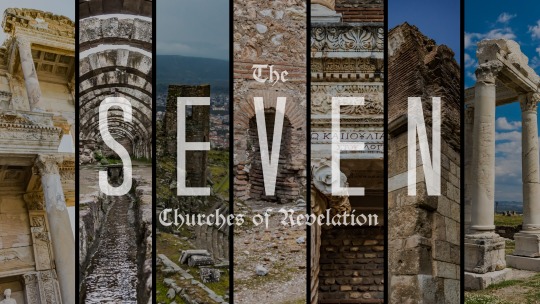
Get a fresh perspective on the book of Revelation and Jesus’ message to churches in all times. Visit the ancient sites of the seven churches described in Revelation. Gain insights into God’s love for the world, His warning and correction for the churches, and His hope and encouragement for the future. A perfect resource for individual or small group study: https://youtube.com/playlist?list=PLPOUA7GLxXIG-Cc84xHWAB9dw25R2Og3Y

In a historic final interview, filmmaker Aaron Russo goes in depth on the insider knowledge given to him by a member of the Rockefeller family: https://www.banned.video/watch?id=62a0c0b6f3feec02cafe1bb3 Federal Reserve System: https://www.conservapedia.com/Federal_Reserve_System https://www.jesus-is-savior.com/Evils%20in%20Government/Federal%20Reserve%20Scam/federal_reserve_is_evil.htm 9/11: https://www.jesus-is-savior.com/Evils%20in%20Government/911%20Cover-up/911.htm https://www.banned.video/channel/richardgage911 Feminism: https://www.conservapedia.com/Feminism https://www.jesus-is-savior.com/Evils%20in%20America/Feminism/feminism_is_evil.htm Destroying the family: https://www.conservapedia.com/Destroying_the_family Public school culture: https://www.conservapedia.com/Public_school_culture Government: https://www.conservapedia.com/Government World Debt Clock: https://usdebtclock.org/world-debt-clock.html Mark of the Beast: https://www.markofbeast.net/ https://www.conservapedia.com/Number_of_the_Beast https://biblehub.com/kjv/revelation/13.htm
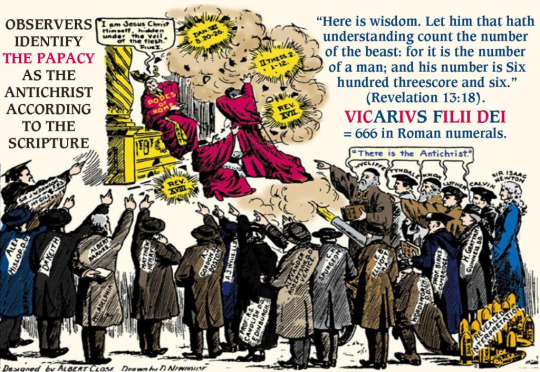

#Cave of the Apocalypse#Patmos#Revelation#Bible#God#Jesus#7Churches#John#Exile#Visions#EndTimes#Mark of the Beast#666#Number of the Beast#Sabbath#Mystery Babylon#Mother of Harlots#New World Order#Evil in the Last Days#Money#Greed#Narcissism#Destruction of the Family#Feminism#Federal Reserve#Heaven#Hell#New Jerusalem#Lake of Fire#Revelation17
4 notes
·
View notes
Text
Wild to me how Jack the Ripper, the serial killer prototype, coincidentally killed sex workers and surgically excised their wombs during the infancy of eugenics. The “science” went on to manifest as industrial mass murder and is currently incarnated as nativism, as well as the austerity almost universal to the Anglo political spectrum, with a body count orders of magnitude beyond serial murder. The modern news media, also nascent at the time of Jack the Ripper, sensationalizes serial murder almost as an act of God, a freak of nature, while justifying—or providing the space for the justification of—austerity. Like I’m not saying it’s a plot, in fact I’d argue that it isn’t. It’s a product of the bourgeois paternalist lens: their ideology of competition over cooperation is better for society and progress, so people who are inspired to murder the “dysgenic” poor must be motivated by something else, like their psychology—which, to bring it full circle, owes to their bad genes. It’s why Anglo “progressives” always seem to fall into fascist pitfalls like liberal interventionism and trans-exclusive radical feminism. The social Darwinist premise of the market as synonymous with civilization is incompatible with the respect for self-determination it would take to avoid both of these. There’s a part of me that wonders if the Anglo bourgeoisie is incapable of the humility it would take to extend the necessary compassion because their history—displacing/exterminating indigenous Celts and Americans—forces them to cling to “all for the best.”
As a note on my area of study, the Hebrew literature that is foundational to Christianity expertly explores the humility of divine election being faced with the reality of subjugation (contrast with the influence of European nationalism through Anglos and parallel to British Israelism that resulted in modern Zionism) and, to me at least, seems to ultimately conclude that peace is more effective at producing justice than war and domination. Theologically, Anglo Christians prefer to parallel the conquest of Canaan and the eschaton, when the more obvious Biblical model is Babylon/Rome.
Serial killer horror almost always falls flat with me, not only because by default it has to frame the police (usually the literal FBI) as an unquestionable force of good, but because I know just enough about IRL serial killers (thanks 3 years of my life I wasted "studying" criminology) to know they are unanimously deeply uninteresting and pathetic people. The most common type of serial killer is a guy who kills vulnerable people (sex workers, substance users, racialized women and girls, queer people) because he can and gets away with it for a while because he's targeting people whose lives are explicitly devalued by the society he lives in. That's it. There's no secret pattern that needs to be uncovered, no cryptic messages that need to be decoded, and definitely no "Satanic" shit. The handful of times there is weird "occult" stuff involved it's literally just untreated mental illness or fascist mysticism/religiosity. There's genuinely nothing interesting or scary about these people, just a bitter and depressing distillation of the thousands of routine violences needed to maintain the status quo.
6K notes
·
View notes
Text
Course Syllabus
Live By Faith: A Study of The Book of Habakkuk
Instructor: David Malcolm McGruder, Executive Pastor
Howard Thurman Bible Institute
February 10 – 12, 2025
Course Overview: How do you trust God in the face of chaos, disruption, and uncertainty? This question lies at the heart of the book of Habakkuk, where the prophet wrestles with God’s justice in the midst of societal decay and political upheaval. Set during the waning days of Judah, Israel’s southern kingdom, Habakkuk observes the rise of the Babylonian empire as an instrument of divine judgment against Judah’s injustice and idolatry. This course invites students into a close reading of the book of Habakkuk, exploring its historical context, literary content, and timeless themes of faith, justice, and resilience. Through theological reflection and critical analysis, participants will uncover the contemporary social justice implications of this ancient Hebrew text. Together, we will wrestle with Habakkuk’s questions and consider how, in a world marked by uncertainty and systemic injustice, believers can live by faith.
Learning Objectives: By the end of this course, students will:
Examine the historical and political context of Habakkuk and its implications for biblical prophecy.
Analyze the literary structure and poetic nature of Habakkuk’s dialogue with God.
Interpret the theological themes of faith, justice, and divine sovereignty.
Apply Habakkuk’s message to contemporary social justice issues and personal faith journeys.
Reflect on the role of lament and hope in spiritual resilience.
Course Schedule
Monday, February 10, 2025 – Babylon: Wrestling with God’s Justice
📌 Topics:
Introduction to the Book of Habakkuk
Historical Context: Judah’s Decline and the Rise of Babylon
Themes: Lament, Divine Judgment, and Faith in Crisis
Literary Structure: Prayer, Poetry, and Prophecy
Text Focus: Habakkuk 1:2–2:1 (Habakkuk’s First Complaint & God’s Response)
📖 Guiding Questions:
How does Habakkuk’s complaint compare to other prophetic laments in the Bible?
Why does God allow the wicked (Babylon) to prevail over Judah?
What does Habakkuk teach us about questioning God?
📚 Assignment (Optional):
Write a reflection on a modern-day parallel to Habakkuk’s concerns about injustice.
Compare Habakkuk’s lament with Psalm 13 or the book of Job.
🔗 Course Materials: https://february2025htbi.tumblr.com
Tuesday, February 11, 2025 – A Vision for an Appointed Time: Trusting God’s Timing
📌 Topics:
Theological Themes: God's Sovereignty and Human Waiting
The “Appointed Time” and the Call to Live by Faith
The Five Woes: God's Judgment on Oppressive Nations
Text Focus: Habakkuk 2:1–4, 2:6–20
📖 Guiding Questions:
What does it mean to “live by faith” (Habakkuk 2:4)?
How do the "Five Woes" reflect divine justice in history?
How do we maintain faith when God's promises seem delayed?
📚 Assignment (Optional):
Research how Habakkuk 2:4 is used in the New Testament (e.g., Romans 1:17, Galatians 3:11, Hebrews 10:38).
Write a short reflection on waiting for God’s timing in your personal faith journey.
Wednesday, February 12, 2025 – Live by FAITH: From Lament to Praise
📌 Topics:
Habakkuk’s Prayer: A Shift from Complaint to Worship
God’s Power and Presence in Troubled Times
Rejoicing Despite Hardship: A Model for Faith Today
Text Focus: Habakkuk 3:1-16, 3:17–19
📖 Guiding Questions:
How does Habakkuk’s perspective shift from lament to faith?
Why is Habakkuk’s final response a song of praise rather than another complaint?
How can Habakkuk’s faith journey serve as a model for contemporary believers?
📚 Assignment (Optional):
Write a modern adaptation of Habakkuk’s prayer that speaks to today’s challenges.
Reflect on a time when faith sustained you in hardship.
Course Resources
📖 Primary Text: The Book of Habakkuk (any reliable Bible translation) 📚 Supplementary Readings:
Walter Brueggemann, Prophetic Imagination
Elizabeth Achtemeier, Nahum-Malachi (Interpretation Commentary)
N.T. Wright, God and the Pandemic (for modern application)
T. H. Lim, (2022). Why did Paul cite Habakkuk 2:4b? The Expository Times, 133(6), 225-232. https://doi.org/10.1177/00145246221075893
🖥 Course Materials & Discussion Forum: https://february2025htbi.tumblr.com
0 notes
Text
What are the Key Concepts in Geometry?
Geometry is the mathematical study of spatial properties and relationships of objects, including points, lines, angles, and surfaces. It involves understanding the dimensions and measurements of objects, analyzing how they relate, and exploring their behavior under transformations.
The word “geometry” is derived from the Greek words geo (earth) and metron (measure), reflecting the subject’s origins in land measurement. Early civilizations used geometry to divide land, construct buildings, and map territories, giving rise to concepts that form the backbone of modern mathematics.
A Brief History of Geometry
The history of geometry dates to ancient times and spans several cultures. Key milestones include:
Ancient Egypt and Babylon:
The Egyptians used geometric principles to measure land after the Nile River floods.
Babylonians applied geometry for agricultural planning and astronomy.
2. Greek Geometry:
The Greeks formalized geometry through logical reasoning. Euclid, often referred to as the “father of geometry,” compiled existing knowledge in his book The Elements.
Pythagoras discovered the relationship between the sides of right-angled triangles (Pythagoras’ theorem).
3. Indian Contributions:
Ancient Indian mathematicians like Aryabhata and Brahmagupta contributed to the development of geometry, particularly in astronomy and trigonometry.
4. Non-Euclidean Geometry (18th-19th Century):
Mathematicians like Gauss, Riemann, and Lobachevsky developed new forms of geometry, including hyperbolic and spherical geometry.
5. Modern Geometry:
With the advent of computers, geometry has found applications in 3D modeling, graphics, artificial intelligence (AI), and space exploration.
Types of Geometry
Geometry can be divided into several branches, each with unique characteristics and applications:
Euclidean Geometry
This is the geometry taught in most schools, based on Euclid’s postulates. It deals with flat spaces and covers familiar concepts like points, lines, angles, and polygons.
Examples: Angles in a triangle add up to 180°, and parallel lines never meet.
2. Non-Euclidean Geometry
In contrast to Euclidean geometry, this branch deals with curved surfaces.
Types:
Spherical Geometry: Used to study shapes on a sphere’s surface (e.g., Earth).
Hyperbolic Geometry: Deals with negatively curved surfaces (useful in complex networks and theoretical physics).
3. Coordinate Geometry
Combines algebra and geometry to study shapes using a Cartesian plane (x-y coordinate system).
Applications: Used to calculate distances, slopes, and areas of shapes plotted on a graph.
4. Analytic Geometry
Extends the concept of coordinate geometry to study curves and surfaces using equations.
5. Differential Geometry
Uses calculus to study the properties of curves and surfaces.
Applications: Used in physics, particularly in Einstein’s theory of relativity.
6. Fractal Geometry
Studies complex patterns that are self-similar at different scales.
Examples: Fractals are found in nature, such as in snowflakes, coastlines, and tree branches.
Key Concepts in Geometry
Below are the core principles and topics that students encounter when studying geometry:
Points, Lines, and Angles
Point: A location in space with no size or dimension.
Line: A straight path extending infinitely in both directions.
Angle: Formed when two lines meet at a point (vertex).
Applications of Geometry in the Real World
Architecture and Engineering
Architects use geometry to design buildings and ensure structural stability.
Engineers apply geometry in constructing bridges, tunnels, and machinery.
2. Computer Graphics and Animation
3D models and virtual environments in video games and movies rely on geometric principles.
3. Astronomy and Space Science
Astronomers use geometry to calculate distances between celestial objects and model planetary orbits.
4. Robotics and AI
Robots need geometric algorithms to navigate spaces and perform tasks efficiently.
5. Art and Design
Artists use geometric patterns and symmetry to create visually appealing designs.
Importance of Geometry for Students
Studying geometry offers more than just academic knowledge—it cultivates essential life skills, including:
Logical Reasoning: Students learn to think logically and build structured arguments.
Spatial Awareness: Geometry helps in visualizing objects and understanding their relationships.
Problem-Solving Skills: Geometric concepts encourage creative approaches to challenges.
Additionally, geometry forms the basis for advanced topics like trigonometry, calculus, and physics, making it essential for students pursuing careers in STEM fields.
Geometry is much more than a branch of mathematics; it’s a powerful tool that shapes how we see and interact with the world. From the design of towering skyscrapers to the precision of spacecraft trajectories, geometry is all around us. Mastering it not only enhances mathematical skills but also nurtures critical thinking, creativity, and problem-solving abilities.
For students looking to deepen their understanding of geometry, platforms like Tutoroot offer interactive and engaging lessons tailored to various academic levels. Geometry opens doors to exciting possibilities, inspiring learners to explore the beauty and logic underpinning the world. Tutoroot offers a comprehensive online maths tuition program designed to help students succeed. With experienced tutors, personalised learning plans, and a wealth of educational resources, Tutoroot provides the support and guidance students need to excel in maths.
1 note
·
View note
Text
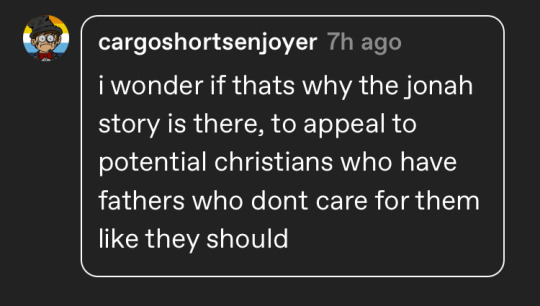
@cargoshortsenjoyer there's a WHOLE lot of history and scholarship I'm going to try and summarize briefly: the author of Jonah is largely accepted to be a Jewish person from the post-exilic Persian period, meaning that after Babylon had conquered and sent Judah (the Southern kingdom) into exile, the Persian Empire conquered Babylon and started letting people return. [The author is generally accepted as being from Judah, even though Jonah the prophet is canonically from Israel, the Northern kingdom.]
There's a lot of arguments over whether Jonah is a satire and, if so, of what, but a lot of modern scholars agree that Jonah is interrogating the idea that God only favors Israelites, that oppressors will get what's coming to them and, if we follow Serge Frolov, the idea that Jews just need to take Ls to save gentiles. (Jonah is the Anglicized version of Yona/Yonah, meaning dove, which is a sacrificial bird.) (You can see how this idea doesn't hold much appeal in a post-Holocaust world.) So it's not about the God/human relationship paralleling parenthood, but more about trying to process the exile and asking God what TF was up with that.
1 note
·
View note
Text
me trying to explain that margot robbie as Nellie LaRoy in babylon is INSPIRED casting very much representative of her actual place at the time of the films release in modern day Hollywood, exploring the way actresses are still held to standards of etiquette and decorum only now in a more subtle way with the roles that they take on like on one side of the spectrum you have actresses like anya Taylor-joy and cate blanchett who are known for portraying "feminine rage" through repressed characters who strain and restrain themselves until they explode whereas margot interestingly plays characters that exhibit an outright uninhibited rage that could be considered "masculine" when you think of similar celebrated male performances where they just yell the whole time in roles such as I tonya even as Harley quinn and how that worked really well for her as she was emerging in hollywood because she had that sort of violent but sexy gimmick going for her like wow did you hear she slapped leonardo dicaprio in the face when she auditioned for wolf of wall street and cussed out will smith when he flaked on their meeting for focus?? but after a few years people grew tired of that and started to even ridicule her for it and whenever movies she was in flopped she'd be blamed because of course her image was superficially used to promote those movies because she's hot and she became box office poison and as Nellie LaRoy in Babylon she represented and conveyed that perfectly almost like a double entendre especially when you consider the her parallel character constance moore the demure nepobaby played by SAMARA WEAVING OF ALL PEOPLE who is first presented as the lesser low-impact sexless version of nellie/margot "the wild child" (samara was such a good sport for this lmao) but ultimately does better because with her persona she IS the more desirable type of actress that never goes out of style

but of course none of this really matters or applies anymore anyway because no one watched Babylon and also Barbie just made a billion dollars and she has that whole doll persona going for her now so who gives a shit about what "serious" cinema circles say about her
might rewatch babylon today
233 notes
·
View notes
Photo



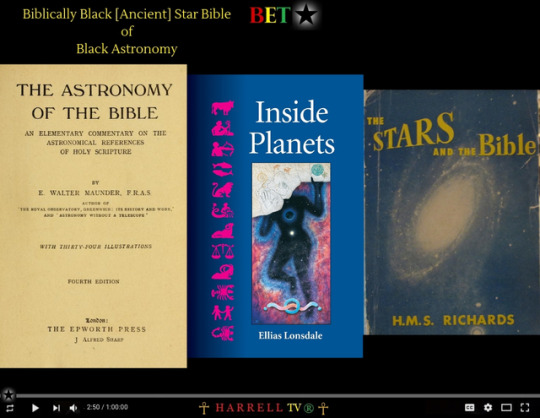

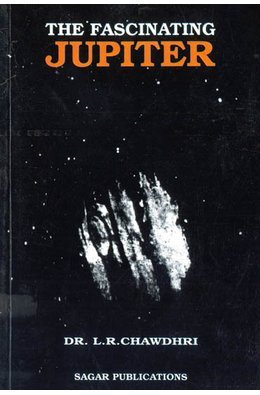
卍 JEHOVAH Occult Witness Me [ME = U.S. Michael Harrell = TUT = JAH] from QUANTUM HARRELL SPACE® since I BEE So HIGHLY ILLUMINATED [HI = HITTITE] on Earth [HE = JAH] as I Mathematically ADJUST [MA] My INTERNAL [MI = MICHAEL] Longitude & Latitude Pineal Gland of Primordially Ancient [PA = SUPERNATURAL] Black Altitude Energy [BAE = COSMIC] Memory intEL [MELanin] II Meditatively ENVISION [ME = U.S. Michael Harrell = TUT = JAH] Underworld [JU = JUPITER] Life 卍
#U.S. Michael Harrell [Emperor TUTANKHAMŪN] on Earth#My QUANTUM HARRELL SPACE® of SIRIUS Black [B] HARRELL TECH® Intelligence from QUANTUM BLACK ATLANTIS [QBA = BABYLON]#FUCK nasa#FUCK Fake space x#I SABOTAGE ALL powerless TELEVISED govment agencies of fallen america wit’ My QUANTUM Black Occult Technocracy [BOT]#I Mathematically ADJUST [MA] My INTERNAL [MI = MICHAEL] Longitude & Latitude Pineal Gland on HARRELLTV®#modern day humanity so artificially intelligent on earth#My PARALLEL Black Astral Earth [BAE = COSMIC] Plane Energies [PLANET] of A SIRIUS Black [B] GLOBAL Nation Under [NU = NIBIRU]#Inner Earth’s [HADES] QUANTUM Black Altitude Earth [BAE = COSMIC] Energy Technology [E.T.] SHIPS of Underworld NIBIRU [SUN] Radiation#iSEE Inner Earth [HADES] QUANTUM Black Afterlife Earth [BAE = COSMIC] Energies of UNSEEN Sentient Aura [U.S.A. = ALIEN] Spirits#Inner Earth’s [HADES] QUANTUM Black Airwave Earth [BAE = COSMIC] Energies of HARRELL TV®#you still sittin' in church and still don't know shit#you still goin' to school and still don't know shit#america dead y'all#america has fallen and she ain't gettin' back up... FUCK america
2 notes
·
View notes
Note
what is this pattern where fgo overstates how ~special~ and ~overpowered~ japanese servants are? genuine question bc none of the grand servants or candidates are japanese. there are no japanese lostbelt kings. none of the japanese servants listed on ooku's event bonus even stand out to me as especially strong in lore
It’s one of those weird things that you at first don’t think is a thing and then you start actually reading and it’s like. O_O.
Like Japanese buddhist religious interpretations are given a stronger influence than other religions that run parallel to Buddhism (see kama/mara: mara is only really linked to kama in Buddhism and it’s basically maras presence alone making them an assassin despite both kama AND Sakura being notable archers, also the fact Indian god kama decided to make a Japanese themed hell depravity pit and that no Indian servants besides kama and parvati have bonuses despite ooku being a lb4 prelude and kama also being an Indian god as an example; also how the Buddhist priestess kiara is essentially always one step ahead of kama even if she does get destroyed at one point) this is also linked to how fate tends to sort of be anti god in the sense they don’t really believe in humans ‘relying’ on gods-whether through worship or actual divine intervention
There’s also the fact that they’ve just straight up released far, far more Japanese servants than other nations. Obvs some of this is just a familiarity bias, but when you also look at how there’s basically no African or South America heroic spirits it’s a bad look that they keep putting them out

This is an older map and it’s just Asia, but you can get a decent idea of just how heavily weighted it is
That being said, even if there are no grand servants who are Japanese they’ve still been either hyped up plenty in story. Fgo went out of its way to establish that more modern heroic spirits are always going to be weaker than ones with greater mystery, yet the shinsengumi and artists like hokusai or bakin are both ssrs and treated as powerful characters by the narrative. In Babylon king gilgamesh specifically tries for summoning Japanese heroes bc, in his words ‘they’re better at slaying demonic creatures’ (says this in the anime at least)(like…there are lots of cultures that have legends of heroes killing monsters????) and out of the eight servant he summons, only two, leonidas and Merlin, aren’t Japanese.
There’s also the fact that writers are implied to be weak heroic spirits, and as a result shakespeare and hans are both low rarity units-but then both sei AND murasaki, semi-obscure-outside-of-Japan authors, are 5stars? They also noticeably buffed murasaki’s combat ability by giving her the ability to use onmyouji, something which she herself says she never really used in life. Of course unit rarity doesn’t necessarily mean anything, but why is Sei so much more powerful than Shakespeare? Shakespeare is literally one of the most famous authors in the world, and his noble phantasm is described as being able to completely mentally cripple someone, yet this isn’t reflected in his gameplay at all
There’s also the fact tametomo is a grand archer candidate, can easily and effortlessly pierce through things such as Constantine’s np with his own, and was able to apparently create a large struggle for a group consisting or servants like super orion (an actual grand archer) Chiron, arjuna, and Ishtar simply to stop one of his arrows. For a guy who’s legend was sinking a boat with his shot. It’s true he had grails powering him both times, but it does read very ‘our guy is the most specialist and coolest of them all’
Musashi also runs into this issue tbh-she’s a much more modern swordswoman, but she had mystic probability deducing eyes, can cut the void, leap through reality, everyone loves her, while non-Japanese people from the similar time period are usually given far less to work with. Or how they insist you need to have a strong, well known legend to manifest as a servant, but then choose relatively obscure tales like the cut tongue sparrow and make her a limited 5 star.
Like idk there’s more to proving a certain group gets favored than JUST having grand servants. I’m not sure how much sense this makes bc it’s late and my typing is NOT working but I hope the gist comes across? I think the thing is we expect there to be SOME favoritism and prioritizing of Japanese myths and history, it is made in japan after all and may hold biases, but it’s annoying when that’s all they ever do
#if you can’t tell I’m really mad about the Hindu/buddhism thing#like yeah they have a lot of overlap! Buddhism came from it! but like why treat it as a ‘superior’ thing that overrides the Hindu version#it bugs me#my asks#did you come from reddit? be honest bc I wasn’t even talking abt this here
211 notes
·
View notes
Photo

Sumerian Mythology - The earliest deities of ancient Mesopotamia (61)
The Lament for Sumer and Ur – The end of the Sumerian Kingdom and its legends
In 2004 BCE, during the last year of King Ibbi-Sin's reign, Ur fell to an army from the east. The Sumerians decided that such a catastrophic event could only be explained through divine intervention and wrote in the lament that the gods, "An[Ref], Enlil[Ref2], Enki[Ref3] and Ninmah[Ref4] decided Ur's fate"
The Book of Lamentations of the Old Testament, which bewails the destruction of Jerusalem by Nebuchadnezzar II of Babylon in the sixth century B.C., is similar in style and theme to these earlier Mesopotamian laments. Similar laments can be found in the Book of Jeremiah, the Book of Ezekiel and the Book of Psalms, Psalm 137 (Psalms 137:1–9. Modern scholars have drawn parallels between the lament and passages from the bible.
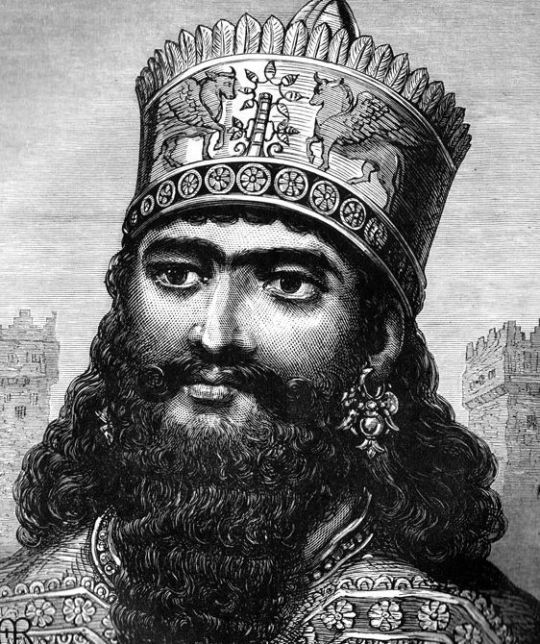
シュメール神話~古代メソポタミア最古の神々(61)
シュメールとウルの滅亡哀歌〜シュメール人国家の終焉(しゅうえん)とその伝承
紀元前2004年、イビ・シン王の最後の年に、東からの軍隊によってウルは陥落した。シュメール人は、このような破滅的な出来事は神の介入によってのみ説明できると判断し、「アン(参照)、エンリル(参照2)、エンキ(参照3)、ニンマー(参照4)という神々がウルの運命を決めた」と嘆きの言葉に記している。
紀元前6世紀にバビロンのネブカドネザル2世によってエルサレムが破壊されたことを嘆いた旧約聖書の「嘆きの書」は、このような初期のメソポタミアの嘆きとスタイルやテーマが似ている。同様の嘆きは、エレミヤ書、エゼキエル書、詩篇137篇(詩篇137:1-9)にも見られる。現代の研究者たちは、この嘆きと聖書の一節との間に類似性を見出している。
#lament for ur#ibbi-sin#the last king#nebuchadnezzar ii#babylon#The Book of Lamentations of the Old Testament#sumerian mythology#sumerian gods#mythology#legend#folklore#nature#art
88 notes
·
View notes
Text
Pride Month special: Manzat, the deified rainbow and her LGBT connection

Considering June is the Pride Month, I've decided to dedicate this month's first article to a rainbow-related topic too. Below the cut you can learn everything there is to know about the Mesopotamian goddess of the rainbow, Manzat (also spelled Mazziat, Manziat, Mazzet etc.) - her origin, role ascribed to her by ancient authors, associated deities and more. As promised by the title, the final section of the article deals with a text mentioning Manzat, which is, as far as I can tell, the oldest documented association between the rainbow and LGBT themes.
Manzat isn't exactly an A list goddess. Even calling her a B list one would be a stretch. Indeed, she's so obscure that we know more about many attendant deities than about her. She nonetheless is attested in many different sources, found in areas between the ancient states of Mari (in present day Syria) and Elam (in present day Iran). Manzat most likely has her origin among Akkadians in ancient Mesopotamia. Her name is pretty self explanatory – if written without the symbol known as “divine determinative” in front of it, it's simply the Akkadian term for the regular rainbow. While a Sumerian form of the name is known as well – Tir-anna (“Bow of heaven”) – the fact it appears to be a pun based on Akkadian homonyms (the sign used to write “Tir”means “forest” in Sumerian but was pronounced close to the Akkadian word for bow leading to such an usage in some Sumerian texts) makes it unlikely it arose naturally.
Between Elam and Mesopotamia
Curiously, it seems that despite Akkadian origin she was actually most popular in Elam, to the east of the Tigris. The first mention of her known today comes from the treaty of Naram-sin, king of Sumer and Akkad, with an unspecified ruler of a part of Elam, where she appears among the deities serving as its witnesses, alongside the crème de la crème of the Elamite pantheon – Pinikir, Humban (likely a “king of the gods” figure like Mesopotamian Enlil, venerated well into Persian times when parallels can be drawn about the cults of him and “Auramazda” - an early, not necessarily fully Zoroastrian form of Ahura Mazda), Inshushinak (the tutelary god of Susa who judged the dead) and so on. It needs to be pointed out that Manzat's “career” in Elam isn't a unique situation. While the Elamite language wasn't related to Sumerian or Akkadian – or to any other known language, living or extinct, for that matter – a number of Elamite gods have names borrowed from these two languages. In addition to Manzat, these include Lagamal (Akkadian - “no mercy,” an underworld deity), Ishmekarab (Akkadian - “hears the prayer,” a law deity) and Inshushinak (Sumerian - “Lord of Susa,” associated with both Lagamal and Ishmekarab). All of them appear in Mesopotamian texts too, but didn't have quite the same relevance there as in Elam. In turn the Elamite god Simut was adopted by the Mesopotamians as a personification of Mars and the goddess Pinikir became somewhat of an international sensation, showing up as far as west as in Anatolia, for example in the Hittite Yazilikaya sanctuary, possibly as a personification of Venus. While early researchers viewed Pinikir as a mother goddess, and this claim still shows up here and there today, renowned experts such as hittitologist Gary Beckman and archaeologist Kamyar Abdi, who studied this goddess in depth, demonstrated she was instead an “Ishtar type” deity. It's also possible the god Tishpak has his roots in Elam, though some scholars instead see him as a reflection of the Hurrian weather god Teshub instead.
The worship of Manzat
Sadly, there are no known myths about Manzat. What little we know about her comes mostly from sources concerned more with cultic than mythical affairs. For example records show that Manzat was reasonably popular as a deity invoked in theophoric names, both Akkadian and Elamite. Examples include Manzat-ili (“Manzat is my god”), Manzat-ummi (“Manzat is my mother”) and “Danum-Manzat” (“Manzat is mighty”). A number of shrines and temples of Manzat are recorded: in Mesopotamia in Nippur and Babylon (four shrines in that city alone), and in Elam in Susa, Hubshen ( present day Deh-e Now) and as a part of the famous Choga Zanbil site (the first photo in this article is a modern reconstruction). It seems in Elam she was often worshiped alongside the already mentioned Simut, and some researchers propose they were a couple; evidence from the Mesopotamian city of Der appears to indicate she was viewed as the wife of the local head god Ishtaran (no relation to Ishtar) there. However, the god list An-Anum doesn't list any husband in its brief Manzat section – only an otherwise completely unknown son, Lugalgidda, and a sukkal (vizier, second in comman), Sililitum. Sililitum's name is Akkadian, but appears to be the name of a month in the Elamite calendar as well. Ishtaran has no wife in this god lists, and some sources simply call his spouse “Šarrat-Der(i)” - “queen of Der.” One curious Elamite inscription refers to Manzat as “Manzat-Ishtar” - this doesn't necessarily indicate a conflation between her and the superstar of Mesopotamian mythology, though. It's possible that in this case “Ishtar” means an ishtar without the capital I: in some text, “ishtar” is a generic term for goddesses, not even necessarily of the “Ishtar type.” Examples of such usage of this term can even be found in Epic of Gilgamesh (tablet XI). No other sources associate Manzat directly with Ishtar – the latter's Elamite equivalent was Pinikir; as I’ll demonstrate later she was associated with another “Ishtar type” goddess though. It's possible that a goddess hiding behind the Akkadian title “Belet Ali” - “lady of the city” - was one and the same as Manzat. The fact that the enigmatic “Belet Ali” was associated with Simut in Elam strengthens this impression. A number of epithets are attested in god lists, among them “Lady of the regulations of heaven,” “Companion of heaven” and “She who makes the city flourish.” Almost all of them highlight her nature as a celestial deity.
Astronomical role
Manzat's Sumerian name Tiranna – but seemingly not her Akkadian name – was also used to refer to an unidentified star. According to Gods, Demons and Symbols of Ancient Mesopotamia: An Illustrated Dictionary by J. Black and A. Green (p. 153, the Rainbow entry) horse head under a “gate” symbol present on some kudurru (Mesopotamian border markers) represents this star, but I can't find this claim anywhere else.

The horse head symbol on a kudurru (British Museum)
Manzat, Nanaya and the promised LGBT themes
While this is technically almost all there is to know about Manzat, the story doesn't end here. As I promised, I will now introduce a text which associated the rainbow – well, Manzat, to be specific, rather than the general idea of rainbows, but the point stands – with broadly understood LGBT themes. The discussed text is a hymn to the goddess Nanaya. Nanaya was either a hyposthasis of Inanna/Ishtar, part of her entourage, or an independent but similar deity, and was first and foremost a goddess of love, including its corporeal and sensual aspect. In some hymns Inanna/Ishtar “tutored” Nanaya.
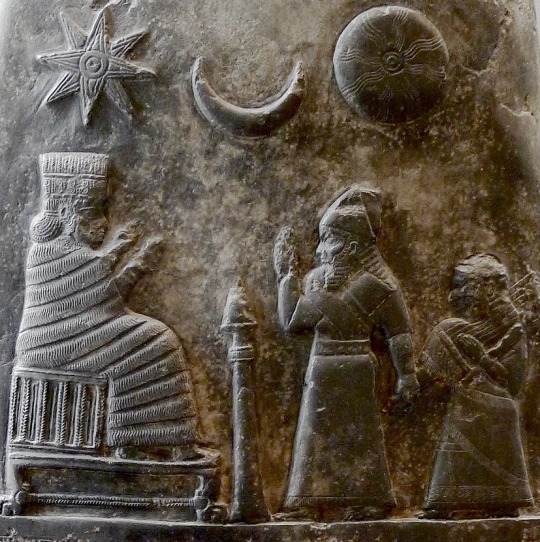
King Meli-Shipak and his daughter praying to Nanaya on a kudurru (wikimedia commons)
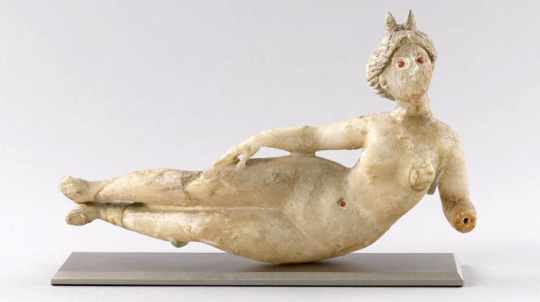
A reclining goddess, identified as a possible late depiction of Nanaya here (Louvre) The composition in mention a type of exaltation, praising the author's deity of choice by comparing their attributes to these of other gods. In the case of exaltation texts dedicated to Marduk this is often erroneously viewed as “monotheism” in sources of dubious quality, but that's not quite what's happening there. The purpose of such texts was to present the object of personal devotion as particularly grand and significant in the divine hierarchy by comparing their traits to these of other gods (eg. at mot henotheism, not monotheism); they are also not exclusive to Marduk, and they don't deny the existence of a multitude of gods (the famous Marduk exaltation still mentions his wife Sarpanit independently for example) According to the discussed tex Nanaya, to put it colloquially, swings both ways:

This passage was identified as referring to sexual matters already in the 1970s (A Sumero-Akkadian Hymn of Nanâ by E. Reiner, p. 233-234; the article is somewhat dated but a link can nonetheless be found in the bibliography). In an earlier strophe Nanaya states that she can take a male form (as a side note Reiner regards the form with “heavy breasts” as unusual for her):

While exaltation of a specific deity could include both gods and goddesses as their “aspects” (exaltation of Marduk included the goddess of victory Irnina among deities compared to him), in this case the mention of a bearded god is connected to a certain degree of fluidity of gender associated with many “Ishtar type” goddesses, especially with the Hurrian Shaushka. For Nanaya it's pretty uncommon, as far as I know appearing only in this single extraordinary text, and even here a result of association with her more famous “mentor” Ishtar – but the point stands. In the rest of the hymn, goddesses Nanaya identifies herself with are enumerated. These include all the usual suspects (like various forms of Ishtar, important city goddesses, etc.), but also Manzat, here identified as the goddess of Der. Since the text describes Nanaya as – if you squint - interested in both men and women and perhaps genderfluid, it's pretty safe to say this is the oldest recorded association between the rainbow and lgbt themes, even though it has nothing to do with modern use of this symbol. If nothing else, it would be funny to bring this up next time someone claims the use of rainbow as a symbol of the LGBT community is “inappropriate” due to its biblical connotations – Manzat and Nanaya, while irrelevant today even by the standards of Mesopotamian deities, are after all figures of even greater antiquity. Happy Pride Month, everyone.
Bibliography
Manziʾat entry in Reallexikon der Assyriologie und vorderasiatischen Archäologie by W. G. Lambert is the source of most of the information in this article
Goddesses in Context: On Divine Powers, Roles, Relationships and Gender in Mesopotamian Textual and Visual Sources by J. M. Asher-Greve and J. G. Westenholz
Gods, Demons and Symbols of Ancient Mesopotamia: An Illustrated Dictionary by J. Black and A. Green
The Other Gods who are: Studies in Elamite-Iranian Acculturation Based on the Persepolis Fortification Texts by W. F. M. Henkelman
Elamite Temple Building by D. T. Potts
A Sumero-Akkadian Hymn of Nanâ by E. Reiner
Elamite Religion in Encyclopaeda Iranica
For more sources regarding Nanaya, other “Ishtar type” goddesses and their possible genderfluid character see my previous articles here, here and here.
135 notes
·
View notes